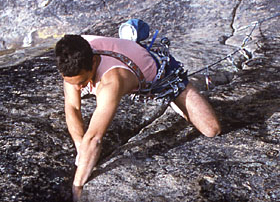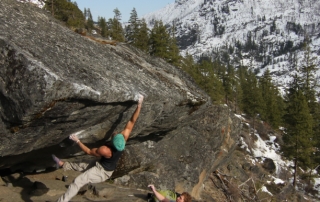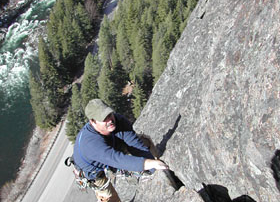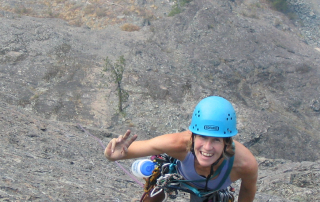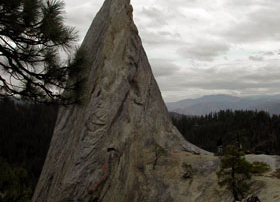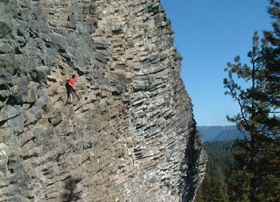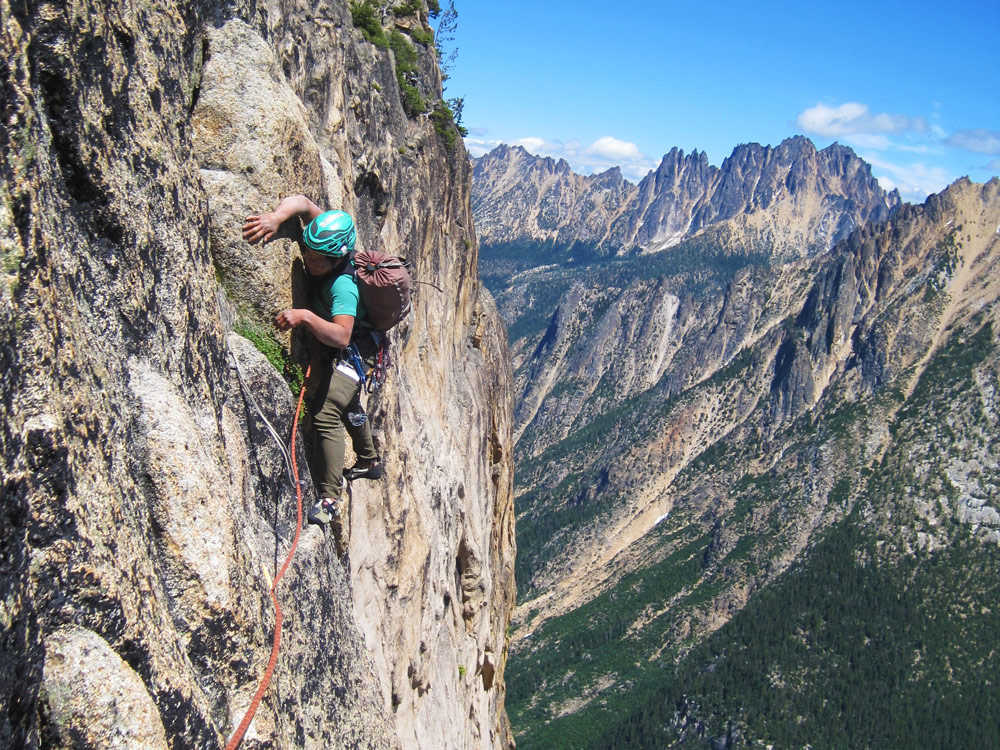East Slope
Leavenworth
Granite crags in scenic mountain canyons. Easy to moderate or even strenuous approaches. Easy 5th class to 5.13. Face/slab/crack.
Tumwater Canyon
Tumwater Canyon, and especially Castle Rock, is the historic heart of Washington rock climbing. The first ascent of Midway was made by Fred Beckey, Wes Grande, and Jack Schewbland in 1948. While it may not have been the first modern crag climb in Washington, it probably comes close. Later, in the 1970s, Midnight Rock became the place for hard crack climbing in Washington, including standard setters such as R.O.T.C. [...]
Icicle Creek Canyon
Although technical rock climbing in Icicle Creek Canyon dates to the 1940s, for years it was slower to develop than in Tumwater Canyon. Outside of Snow Creek Wall, very little history was recorded until the first full guide was published in 1989. Many routes (and even entire crags) were known by different names to different groups of climbers. Other areas remained unknown or secret. Today there are several [...]
Leavenworth (Overview)
Leavenworth is perhaps the densest climbing area in Washington State, with a wide range of bouldering, sport and trad cragging, and access to some of the state’s best alpine rock. Leavenworth is also the birthplace of Washington’s technical rock climbing in the state, and was the focal point of rock climbing in the state for many years. Today, Leavenworth remains one of the most popular and varied climbing areas [...]
Mazama
Metamorphic rock on the dry east slope. Easy to moderate approaches. Sport climbing. 5.5 to 5.12. Slab/face.
Mazama
Climbing in the Mazama/Upper Methow Valley area is often thought of as a rainy-day alternative to climbing at nearby Washington Pass. As its climbing continues to develop, however, Mazama has become a destination in its own right. The traditional hub of Mazama climbing is the Fun Rock area, which is made up of several small crags of metamorphic rock approximately a mile west of the Mazama [...]
Peshastin Pinnacles
Sandstone pinnacles in east slope apple country. Short to moderate approaches. Unique climbing, tending toward runout slabs. Easy 5th class to 5.11. Slab/face/crack.
Peshastin Pinnacles
Peshastin Pinnacles is a sandstone area known for slabs and oddly rounded cracks. Before Frenchman Coulee, Peshastin was the most popular "off season" climbing area in Washington. It is often dry when rains drench Western Washington, or even Leavenworth 15 miles west. Peshastin climbs range from one to four pitches, with many ending on narrow rock crests atop the pinnacles. A number of climbs involve [...]
Tieton
Andesite crags in dry canyons and mountain valleys on the east slope. Moderate approaches. Sport and traditional climbing. 5.3 to 5.12. Face/crack.
Tieton
Tieton rock climbs are mostly on andesite, a volcanic rock similar to basalt. The climbing is spread out along a 20-mile stretch of Highway 12 that ranges from near-desert to subalpine. A number of crags are located in scenic groves of Oregon white oak and ponderosa pine. There are nearly 400 routes in the Tieton, with the routes almost evenly divided between trad and [...]
Washington Pass
Granite spires near the crest of the Cascades. Moderate to medium approaches. Spectacular views. 5.5 to 5.12. Slab/face/crack.
Washington Pass
Washington Pass is really more of an alpine rock climbing area than a crag area although some cragging is found here. Many of the routes reach peaks of over 7,000' in elevation. As noted above, the area is hit by more thunderstorms than other areas in the state and it is also high enough that snowstorms can strike even in the summer. With a relatively short approach hike from the highway, this area makes a great place for a day climb that takes one into some truly spectacular high country. These granite rock climbs feature both crack and face climbing, on rock ranging from very solid to extremely rotten. The climbs are generally 2 to 12 pitches; most descents include rappels. The routes range in difficulty from easy fifth class to 5.13. The area has a long history. South Early [...]

